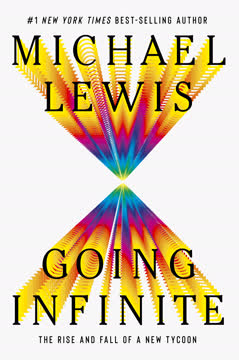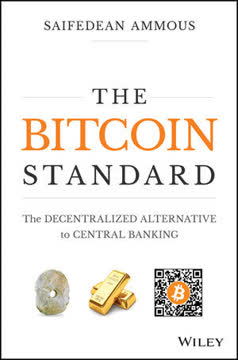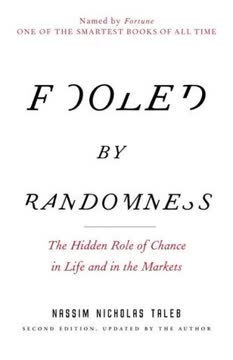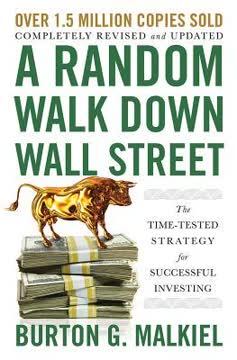Key Takeaways
1. Bitcoin: A Revolutionary Digital Currency Born from Crisis
"Bitcoin: the realization of the Cypherpunk dream."
Financial crisis catalyst: The 2008 global financial crisis exposed the vulnerabilities of traditional banking systems and fiat currencies. This environment of distrust in centralized financial institutions set the stage for Bitcoin's emergence.
Decentralized solution: Bitcoin was designed as a peer-to-peer electronic cash system, operating without the need for intermediaries like banks or governments. Key features include:
- Limited supply (21 million coins)
- Transparent and immutable transaction ledger (blockchain)
- Cryptographic security
- Pseudonymous transactions
Technological breakthrough: Bitcoin solved the long-standing "double-spending" problem in digital currencies without relying on a central authority, using a combination of cryptography, game theory, and distributed computing.
2. The Cypherpunk Roots of Bitcoin and Its Core Technology
"Cypherpunks write code."
Cypherpunk ideology: The Cypherpunk movement, emerging in the early 1990s, advocated for the use of cryptography to protect privacy and promote societal change. Core principles included:
- Privacy as a fundamental right
- Distrust of centralized authority
- Use of technology to achieve social and political goals
Key technological precursors:
- David Chaum's DigiCash (1990s)
- Adam Back's Hashcash (1997)
- Wei Dai's b-money (1998)
- Nick Szabo's Bit Gold (1998)
Bitcoin's innovation: Satoshi Nakamoto combined and improved upon these earlier concepts to create a fully functional, decentralized digital currency system. The use of proof-of-work, blockchain, and economic incentives for network participants were key innovations that made Bitcoin viable.
3. Satoshi Nakamoto: The Enigmatic Creator of Bitcoin
"Satoshi is everywhere and nowhere."
Anonymous creator: Satoshi Nakamoto, the pseudonymous inventor of Bitcoin, remains one of the biggest mysteries in the cryptocurrency world. Despite numerous attempts to uncover their identity, Satoshi's true identity remains unknown.
Key facts about Satoshi:
- Active in Bitcoin's development from 2008 to 2010
- Estimated to hold around 1 million bitcoins
- Communicated primarily through online forums and emails
- Demonstrated expertise in cryptography, computer science, and economics
- Used British English in writings, but showed knowledge of American idioms
Legacy and disappearance: Satoshi handed over control of the Bitcoin project to other developers in late 2010 and ceased all known communications. This disappearance has helped maintain Bitcoin's decentralized nature and mystique.
4. The Rise of Bitcoin: From Obscurity to Global Phenomenon
"Paradise is here or nowhere."
Early adoption: Bitcoin's journey from a niche interest among cryptography enthusiasts to a global financial phenomenon was marked by several key milestones:
- 2009: First Bitcoin transaction
- 2010: First real-world purchase (two pizzas for 10,000 BTC)
- 2011: Silk Road launched, bringing both notoriety and increased adoption
- 2013: Bitcoin price reaches parity with US dollar, then skyrockets to over $1,000
Growing ecosystem: As Bitcoin gained popularity, a diverse ecosystem of exchanges, wallets, and services emerged to support its use and trading. Notable events include:
- Mt. Gox becoming the dominant Bitcoin exchange (later collapsing in 2014)
- Development of hardware wallets for secure storage
- Creation of Bitcoin ATMs and merchant payment services
Mainstream attention: By 2013-2014, Bitcoin had caught the attention of mainstream media, financial institutions, and governments, leading to increased scrutiny, regulation, and investment in the cryptocurrency space.
5. Bitcoin's Potential to Reshape Global Finance and Commerce
"Bitcoin is the beginning of something great: a currency without a government, something necessary and imperative."
Financial inclusion: Bitcoin has the potential to provide banking services to the world's unbanked population, estimated at 1.7 billion adults. Its key advantages include:
- Low barriers to entry (only need a smartphone and internet connection)
- Borderless transactions
- Low fees for international remittances
Disruption of traditional finance: Bitcoin challenges established financial systems by offering:
- Peer-to-peer transactions without intermediaries
- 24/7 operation without holidays or business hours
- Programmable money and smart contracts
Economic implications:
- Potential hedge against inflation and currency devaluation
- Challenge to government monetary policy control
- New models for fundraising (e.g., Initial Coin Offerings)
6. Challenges and Criticisms Facing Bitcoin's Mainstream Adoption
"The world is looking for something – for a new trick. I think that crypto may well be that thing."
Technical hurdles:
- Scalability issues (limited transaction throughput)
- Energy consumption of proof-of-work mining
- User experience and security challenges
Regulatory concerns:
- Legal status varies by country
- Anti-money laundering (AML) and know-your-customer (KYC) compliance
- Taxation of cryptocurrency gains
Market volatility: Bitcoin's price has been subject to extreme fluctuations, hindering its use as a stable medium of exchange and store of value.
Public perception: Negative associations with criminal activities, scams, and environmental concerns have impacted Bitcoin's reputation and adoption.
7. The Future of Cryptocurrencies and Blockchain Technology
"Block chain tech is going to change everything."
Beyond Bitcoin: The success of Bitcoin has spawned thousands of alternative cryptocurrencies (altcoins) and blockchain projects, each with unique features and use cases:
- Ethereum: Smart contracts and decentralized applications
- Ripple: Interbank transfers and remittances
- Monero: Enhanced privacy and fungibility
Institutional adoption: Major companies and financial institutions are increasingly exploring blockchain technology and cryptocurrencies:
- Corporate treasury investments (e.g., MicroStrategy, Tesla)
- Central Bank Digital Currencies (CBDCs)
- Blockchain-based supply chain management and identity systems
Emerging trends:
- Decentralized Finance (DeFi): Lending, borrowing, and trading without intermediaries
- Non-Fungible Tokens (NFTs): Digital ownership and scarcity for art, collectibles, and virtual real estate
- Web3: A vision for a decentralized internet built on blockchain technology
As the cryptocurrency ecosystem continues to evolve, it has the potential to reshape various aspects of finance, governance, and digital interactions. However, the long-term impact and adoption of these technologies remain uncertain and subject to ongoing technological development, regulatory frameworks, and societal acceptance.
Last updated:
FAQ
What's "Bitcoin: The Future of Money?" about?
- Exploration of Bitcoin: The book delves into Bitcoin as a revolutionary form of digital currency, exploring its potential to change the global financial system.
- Historical Context: It provides a historical perspective on money, comparing Bitcoin to past monetary systems like gold and fiat currencies.
- Technical Insights: The book explains the technical underpinnings of Bitcoin, including the blockchain technology that makes it secure and decentralized.
- Cultural Impact: It discusses the cultural and political implications of Bitcoin, particularly its appeal to libertarians and those seeking financial privacy.
Why should I read "Bitcoin: The Future of Money?" by Dominic Frisby?
- Comprehensive Overview: The book offers a thorough understanding of Bitcoin, from its inception to its potential future impact.
- Engaging Narrative: Dominic Frisby combines storytelling with technical details, making complex concepts accessible and engaging.
- Insightful Analysis: It provides a balanced view of Bitcoin's advantages and challenges, helping readers form their own opinions.
- Future Implications: Understanding Bitcoin is crucial as it may play a significant role in the future of global finance and technology.
What are the key takeaways of "Bitcoin: The Future of Money?"?
- Decentralization: Bitcoin operates without a central authority, offering a new model for financial transactions.
- Potential for Change: Bitcoin could disrupt traditional banking and financial systems, leading to more financial freedom.
- Technological Innovation: The blockchain technology behind Bitcoin is a groundbreaking development with applications beyond currency.
- Economic Implications: Bitcoin challenges the current monetary system, raising questions about inflation, government control, and economic inequality.
How does Dominic Frisby explain Bitcoin's creation and its mysterious founder?
- Satoshi Nakamoto: The book explores the mystery of Bitcoin's creator, Satoshi Nakamoto, who remains anonymous.
- Genesis of Bitcoin: Frisby details the creation of Bitcoin, highlighting the technological and ideological motivations behind it.
- Cypherpunk Influence: The book discusses the influence of the Cypherpunk movement, which advocated for privacy and digital currency.
- Speculative Theories: Frisby examines various theories about Nakamoto's identity, adding intrigue to the narrative.
What is blockchain technology, according to "Bitcoin: The Future of Money?"?
- Definition: Blockchain is a decentralized ledger that records all Bitcoin transactions, ensuring transparency and security.
- Immutable Records: Once a transaction is recorded on the blockchain, it cannot be altered, preventing fraud and double-spending.
- Decentralized Network: The blockchain is maintained by a network of computers (miners) that validate transactions through complex algorithms.
- Beyond Currency: The book suggests that blockchain technology has potential applications in various fields, including law, finance, and data management.
How does Dominic Frisby address the potential impact of Bitcoin on the global economy?
- Disruption of Banking: Bitcoin could challenge traditional banking systems by offering a decentralized alternative for transactions.
- Financial Inclusion: It has the potential to provide financial services to the unbanked population, particularly in developing countries.
- Inflation and Control: Bitcoin's fixed supply could protect against inflation, reducing government control over monetary policy.
- Economic Redistribution: The book discusses how Bitcoin could lead to a more equitable distribution of wealth by bypassing traditional financial intermediaries.
What are the challenges and criticisms of Bitcoin mentioned in the book?
- Volatility: Bitcoin's price volatility makes it a risky investment and a challenging medium of exchange.
- Regulatory Concerns: Governments may impose regulations to control or ban Bitcoin, affecting its adoption and use.
- Security Risks: While the blockchain is secure, exchanges and wallets can be vulnerable to hacks and theft.
- Environmental Impact: The energy-intensive process of mining Bitcoin raises concerns about its environmental sustainability.
What are the best quotes from "Bitcoin: The Future of Money?" and what do they mean?
- "Bitcoin is the beginning of something great: a currency without a government, something necessary and imperative." - This quote highlights Bitcoin's potential to revolutionize the financial system by removing government control.
- "The root problem with conventional currency is all the trust that's required to make it work." - It underscores the trust issues inherent in traditional currencies, which Bitcoin aims to solve through cryptographic proof.
- "Bitcoin is a way to involve billions in the world economy." - This emphasizes Bitcoin's potential to provide financial access to the unbanked and underbanked populations globally.
How does Dominic Frisby compare Bitcoin to traditional currencies?
- Decentralization vs. Centralization: Bitcoin operates without a central authority, unlike traditional currencies controlled by governments and central banks.
- Fixed Supply: Bitcoin's supply is capped at 21 million coins, contrasting with fiat currencies that can be printed at will, leading to inflation.
- Transparency: All Bitcoin transactions are recorded on a public ledger, offering more transparency than traditional banking systems.
- Global Accessibility: Bitcoin can be accessed and used by anyone with an internet connection, unlike traditional currencies that may require banking infrastructure.
What role does the Cypherpunk movement play in the development of Bitcoin?
- Privacy Advocacy: The Cypherpunk movement advocated for privacy and the use of cryptography to protect individual freedoms.
- Ideological Foundation: Bitcoin's creation was influenced by Cypherpunk ideals, emphasizing decentralization and financial privacy.
- Technological Contributions: Many Cypherpunks contributed to the development of technologies that underpin Bitcoin, such as cryptographic protocols.
- Cultural Impact: The movement's emphasis on privacy and freedom continues to shape the discourse around Bitcoin and digital currencies.
How does "Bitcoin: The Future of Money?" address the environmental concerns related to Bitcoin mining?
- Energy Consumption: The book acknowledges the significant energy consumption involved in Bitcoin mining due to the computational power required.
- Environmental Impact: It discusses the environmental implications of mining, including carbon emissions and resource depletion.
- Potential Solutions: Frisby explores potential solutions, such as transitioning to renewable energy sources and improving mining efficiency.
- Ongoing Debate: The book highlights the ongoing debate within the Bitcoin community about balancing growth with environmental responsibility.
What future developments in cryptocurrency does Dominic Frisby predict?
- Increased Adoption: Frisby predicts wider adoption of Bitcoin and other cryptocurrencies as they become more user-friendly and integrated into everyday life.
- Regulatory Evolution: He anticipates changes in regulation as governments adapt to the growing influence of digital currencies.
- Technological Advancements: The book foresees advancements in blockchain technology, leading to new applications beyond currency.
- Economic Shifts: Frisby suggests that cryptocurrencies could lead to significant shifts in the global economic landscape, challenging traditional financial systems.
Review Summary
Bitcoin receives mixed reviews, with an average rating of 3.87 out of 5. Some readers praise it as an informative introduction to cryptocurrency, while others criticize its lack of technical depth and overemphasis on speculating about Bitcoin's creator. The book is commended for its readability and historical context but criticized for its libertarian bias and outdated information. Many readers appreciate the discussion on the potential impact of blockchain technology but note that the book glosses over potential drawbacks and risks associated with cryptocurrencies.
Similar Books










Download PDF
Download EPUB
.epub digital book format is ideal for reading ebooks on phones, tablets, and e-readers.




